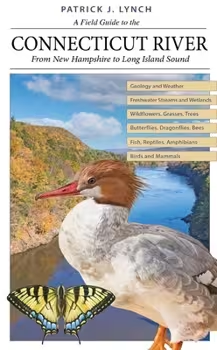Patrick J. Lynch’s “A Field Guide to the Connecticut River: From New Hampshire to Long Island Sound” is a commendable, if somewhat uneven, endeavor to capture the multifaceted character of one of New England’s most significant waterways. It attempts to weave together the river’s geological history, ecological intricacies, and human interactions into a cohesive and accessible narrative.
Lynch’s strength lies in his interdisciplinary approach. He effectively blends elements of geology, biology, and cultural history, offering a holistic perspective on the Connecticut River’s evolution. The geological sections, while occasionally dense, provide valuable insights into the river’s formation and the forces that continue to shape its course. The ecological descriptions, particularly those pertaining to the river’s diverse habitats and resident species, are generally informative and engaging.
However, the book’s attempt to cover such a vast geographic area and a wide range of topics results in a somewhat uneven treatment of its subject matter. The sections on human history and cultural interactions, while interesting, often feel tangential, detracting from the book’s focus on the river’s natural history. Furthermore, the depth of information provided varies considerably between sections. Some topics are explored in detail, while others are given cursory treatment, resulting in a somewhat fragmented narrative.
The book’s organization also presents some challenges. While the chapters are logically arranged, the transitions between topics can feel abrupt, and the overall flow lacks a seamless integration of the various disciplines. This can make it difficult for readers to grasp the interconnectedness of the river’s geological, ecological, and cultural components.
Lynch’s writing style is generally clear and accessible, making the book suitable for a broad audience. However, it occasionally lapses into technical jargon, particularly in the geological sections. This can present a barrier for readers with limited scientific background.
The book’s visual presentation is a mixed bag. The inclusion of maps, diagrams, and photographs is commendable, but the quality and relevance of these visuals vary. Some images are informative and visually compelling, while others are less so, failing to enhance the reader’s understanding of the river.
The book’s field guide aspect, as suggested by its title, is somewhat overstated. While Lynch provides information on identifying key species and habitats, the book lacks the practical, user-friendly format of a traditional field guide. The absence of detailed identification keys and species checklists diminishes its utility for on-site observation.
The book’s regional focus, while its primary aim, also limits it. The Connecticut River’s story, while compelling, is inherently localized. The lack of broader comparative analyses, contrasting the Connecticut River with other major river systems, limits the reader’s ability to draw universal conclusions about river ecology and management.
In conclusion, “A Field Guide to the Connecticut River” is a commendable effort to capture the multifaceted character of this iconic waterway. However, its uneven treatment of topics, organizational challenges, and limited field guide utility prevent it from achieving its full potential. While it offers valuable insights into the river’s natural and cultural history, it ultimately falls short of delivering a truly comprehensive and integrated exploration.





Reviews
There are no reviews yet.